After many years of revival after unification, Berlin offers many incredible sights to choose from. Choose the best time to visit this beautiful city and follow this packed one-day itinerary for culture and food lovers.
Morning. Brandenburg Gate
Let’s start the morning at 9.00 a.m. with a visit to German National icon, Brandenburg Gate. In the early 18th century, King Frederick William I ordered the Prussian capital to be fully enclosed by a wall, not to defend the city, but to tax people, as they travelled in and out of town. 50 years later, King Frederick William II decided the Wall was ugly and ordered building a much grander entrance. Completed at the end of the 18th century, Brandenburg Gate immediately became one of the most recognizable structures in Berlin. During World War II, the gate was highly damaged but survived. Located in the centre of the city, it was used to mark the boundary between East and West Berlin.
Walled off from both sides, the Gate was not accessible to the public for nearly 30 years. With the fall of the Berlin Wall in 1989, Brandenburg Gate was integrated back into the reunited city. It has been the site of many concerts, with both internationally famous bands and local buskers playing there.
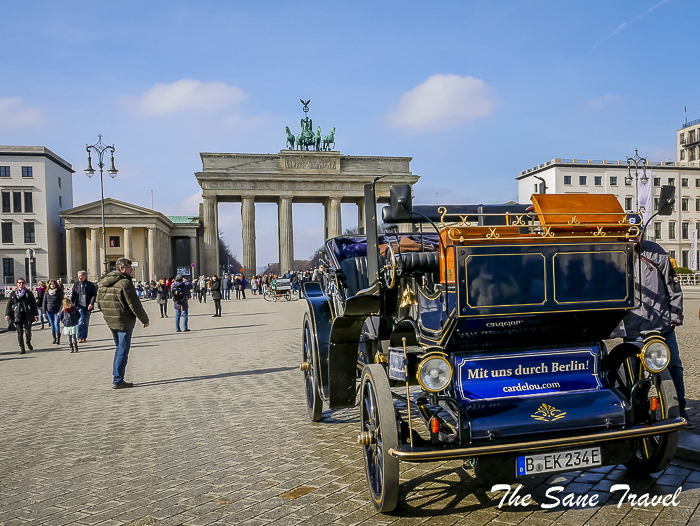 After enjoying the famous gate, let’s move to the nearby Reichstag as an appointment at 10.00 a.m. has been made in advance. It’s better to arrive a bit early because of security controls. The confirmation letter for your appointment has to be handed in to enter the place.
After enjoying the famous gate, let’s move to the nearby Reichstag as an appointment at 10.00 a.m. has been made in advance. It’s better to arrive a bit early because of security controls. The confirmation letter for your appointment has to be handed in to enter the place.
Reichstag visit
It is one of Berlin’s most popular tourist attractions. Some come here to see democracy in action, but most come to wander up through the lofty glass and metal dome that crowns the building. The Reichstag is the seat of the German parliament. It was built at the very end of the 19th century. In 1933, a month after Adolf Hitler had become chancellor, it was damaged by a mysterious fire, which was used as a pretext by the Nazis to hunt down political opponents. The building was further damaged during the battle for Berlin at the end of WW2. It long stood unused before being restored in 1973 and used as an exhibition hall. After the reunification of Germany, it was completely renovated and opened for parliament in 1999 with the cupola designed by Norman Foster. To visit the dome, you first have to go through an airport-like security check in front of the Reichstag. Then you are escorted to the building and to an elevator that takes you to the roof. As you walk the steel ramp that spirals up through the cupola, the view only gets better. At the top of the cone is the upper viewing platform, where you can have a 360-degree view of the German capital. When enjoying views from the top, notice the Victory Column, the Tiergarten Park, the Berlin Cathedral, Berlin’s city hall and the Television Tower on Alexanderplatz, the city’s tallest structure. Also, the gleaming Hauptbahnhof is visible from there.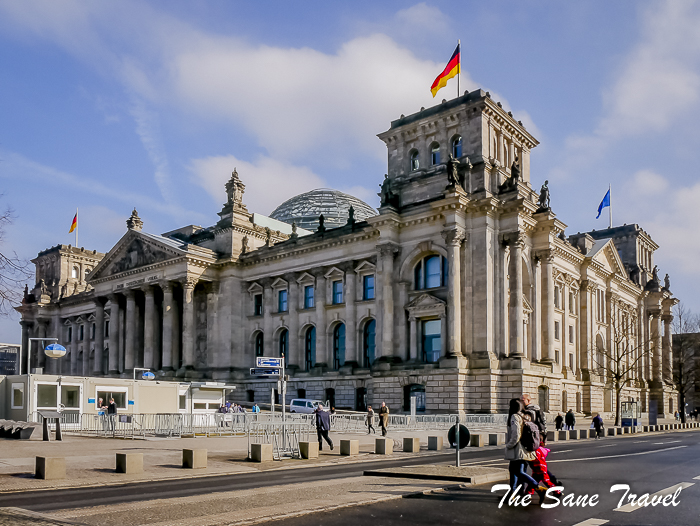
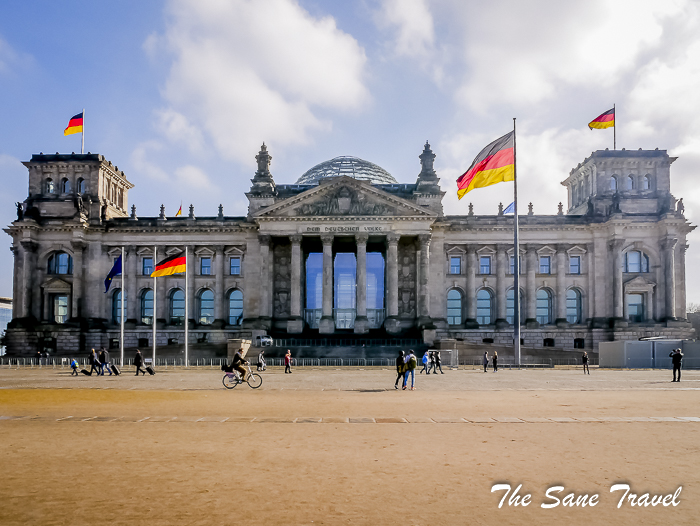
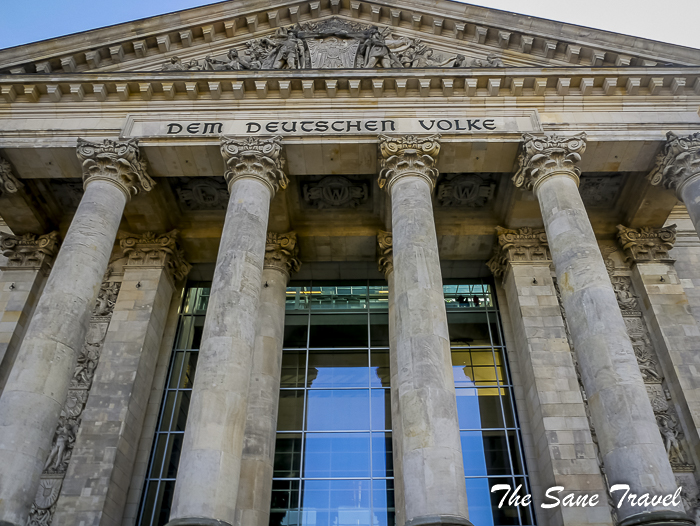
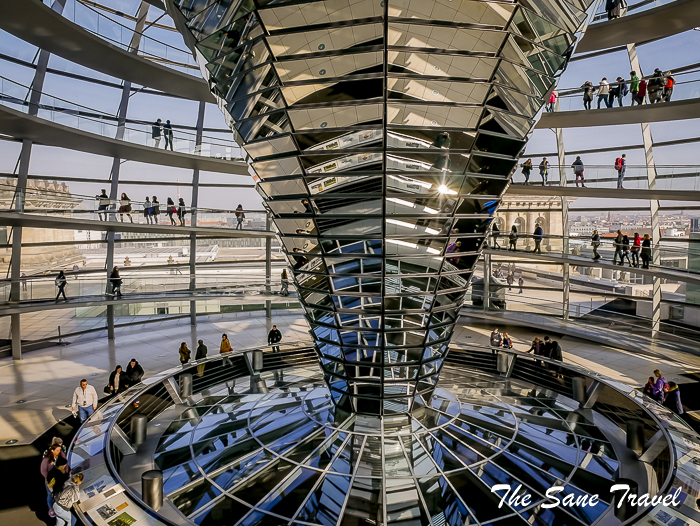
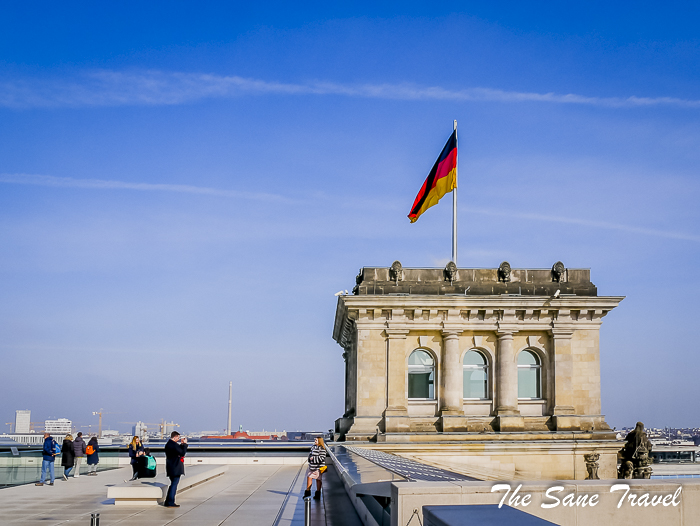 On the roof level, there is a restaurant. If you want to have a coffee or a meal there, book in advance to avoid disappointment.
On the roof level, there is a restaurant. If you want to have a coffee or a meal there, book in advance to avoid disappointment.
After the Reichstag visit, go back through the Brandenburg gate and have a stroll on Unter den Linden to Museum Island.
Walk Unter den Linden
The main boulevard through Berlin, Unter den Linden, is steeped in history. The grand buildings on either side, the lime trees lining the street, the statues and the shops make walking on Unter den Linden an experience in itself. In the early 17th century, Duke Friedrich had lime trees (also called linden trees) planted on the way out of his palace, to have shade as he rode to hunt in the Tiergarten. In the last days of WW2, most of the trees were cut down for firewood, and they were re-planted in the 1950s. Notice some Berlin bears, the State Opera building, St. Hedwig’s Church and Humboldt University on your way.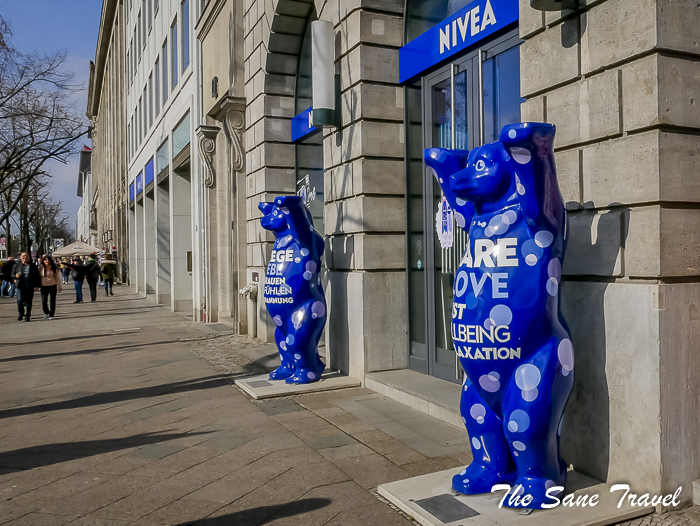
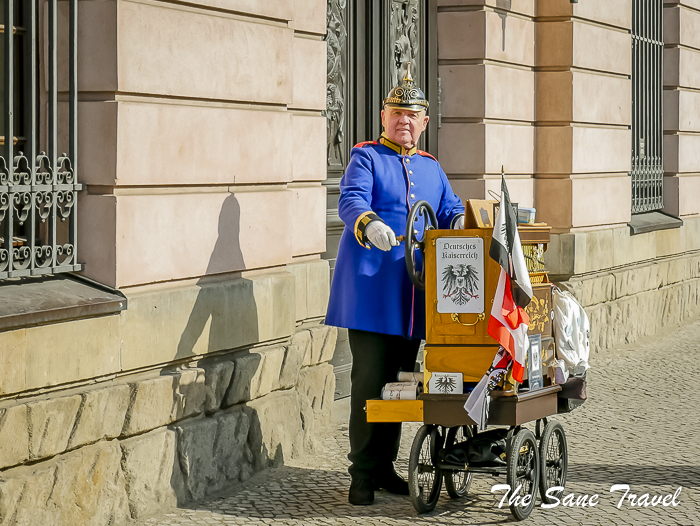
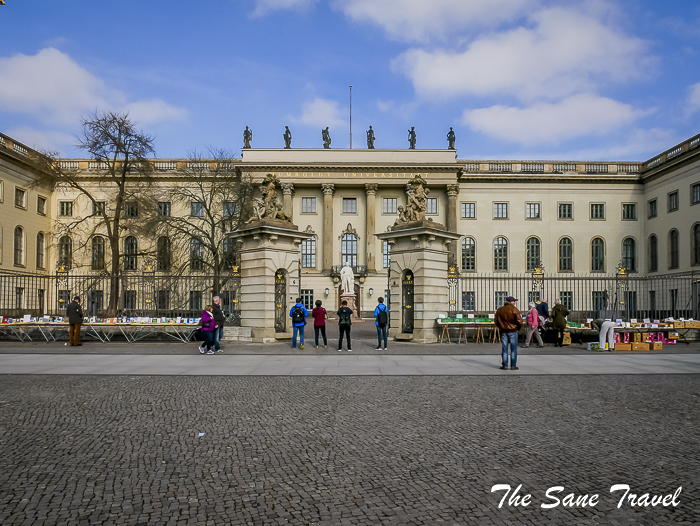 There are many museums on Museum Island to choose from. My choice is
There are many museums on Museum Island to choose from. My choice is
Pergamon Museum
Update. Pergamon Museum is closed until 2027, so please choose another museum on Museum island.
It is one of the most popular attractions in Berlin. The Pergamon Museum is world-famous for its archaeological collection. It is three museums in one – the Collection of Classical Antiquities, the Museum of the Ancient Near East, and the Museum of Islamic Art. The Museum of the Ancient Near East is dominated by the imposing bright blue glazed-brick Ishtar Gate of Babylon from the 6th century BC. The gate is decorated with dragons, lions and bulls, symbolizing the major gods of Babylon.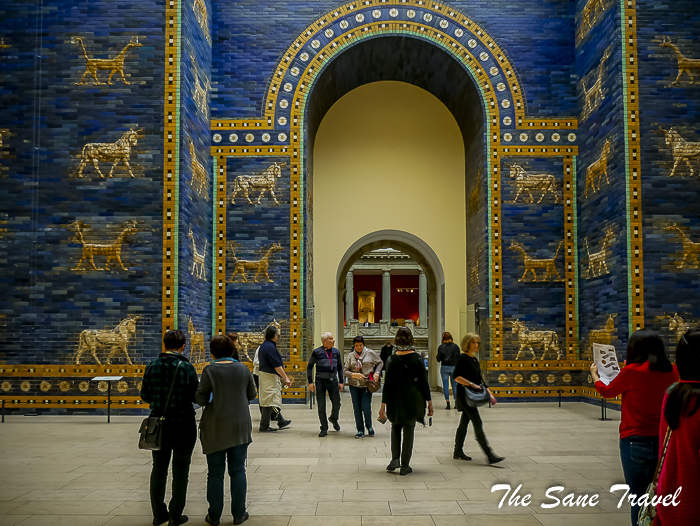
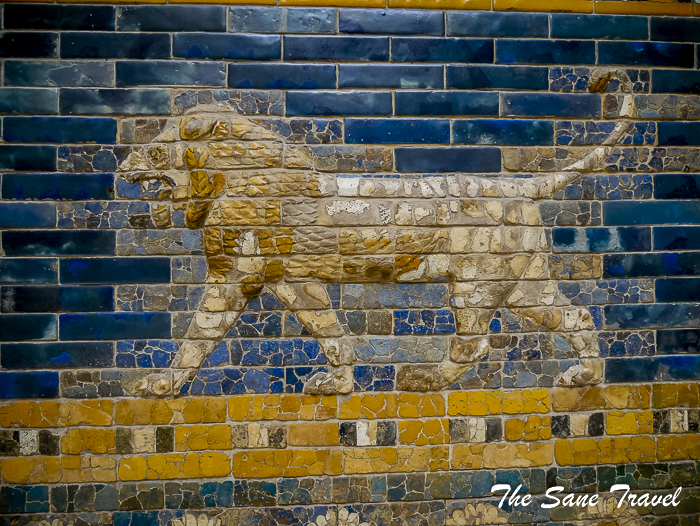 Also notable in this collection is the façade of the throne hall of King Nebuchadnezzar, a reconstructed Neo-Assyrian palace from the 12th century BC, and artefacts from the earliest history of the written word.
Also notable in this collection is the façade of the throne hall of King Nebuchadnezzar, a reconstructed Neo-Assyrian palace from the 12th century BC, and artefacts from the earliest history of the written word.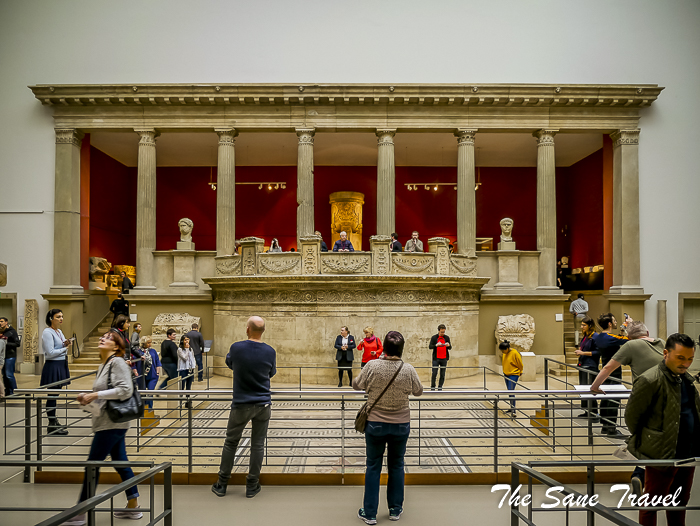
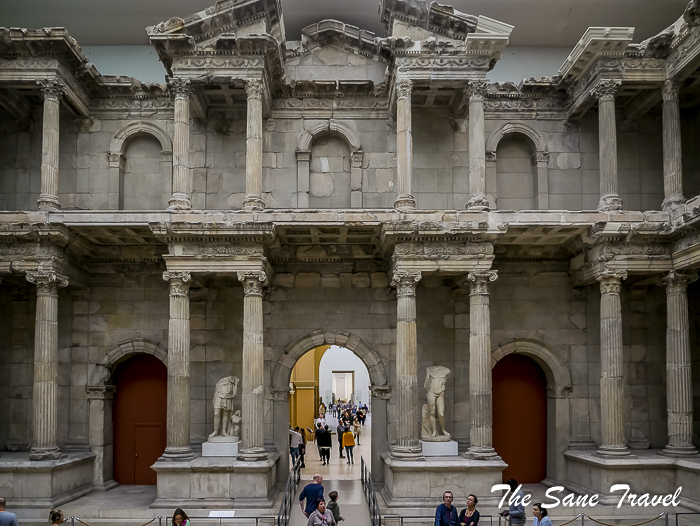
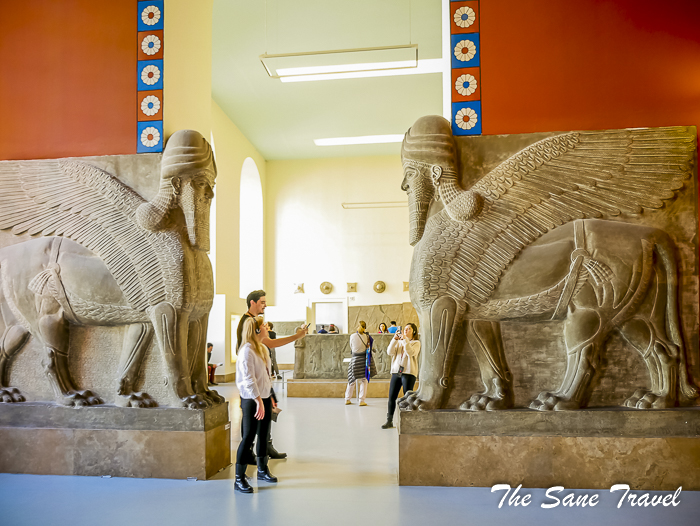 The Museum of Islamic Art was started in 1904 with a donation of precious carpets by Wilhelm von Bode. Such textiles still make up a major part of the exhibition, with colourful examples from Iran, Asia Minor, Egypt and the Caucuses on display.
The Museum of Islamic Art was started in 1904 with a donation of precious carpets by Wilhelm von Bode. Such textiles still make up a major part of the exhibition, with colourful examples from Iran, Asia Minor, Egypt and the Caucuses on display.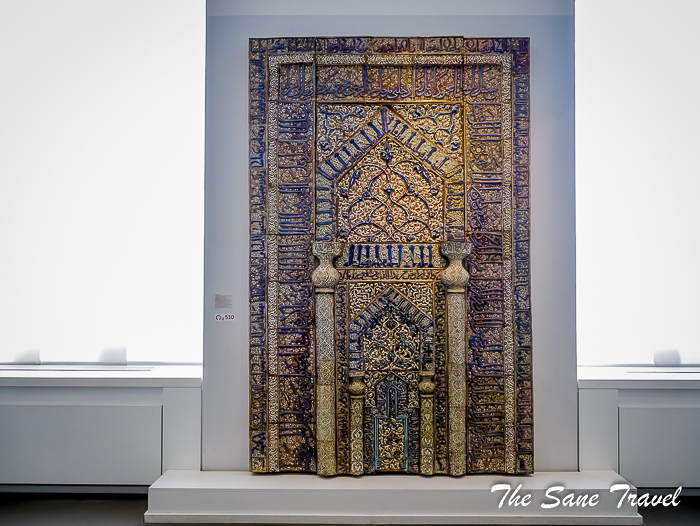 Even though on the day I was visiting there was no line, I booked my ticket in advance to save my time.
Even though on the day I was visiting there was no line, I booked my ticket in advance to save my time.
Afternoon. Bus number 100 tour
After the museum visit, go back to Unter den Linden to take bus number 100. The best seat on the bus is naturally at the front of the upper deck, right over the bus driver. There you'll get a panoramic view through the enormous windows as you roll through the centre of Berlin. After you get back to Reichstag/Bundestag, travel past the Haus der Kulturen der Welt and Bellevue Palace towards the Victory Column.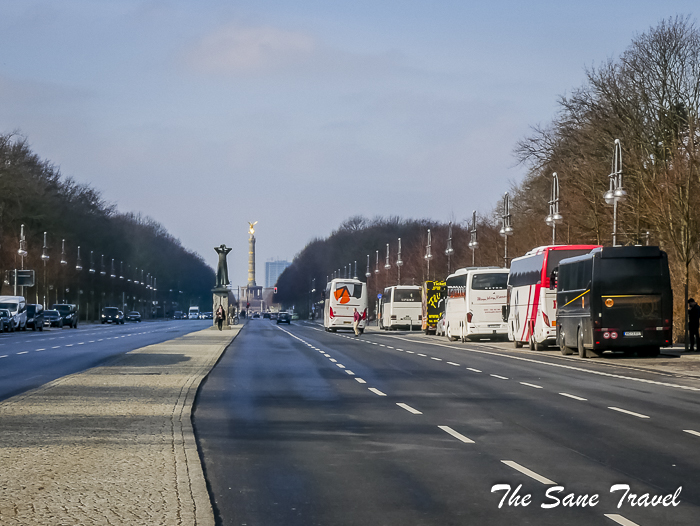
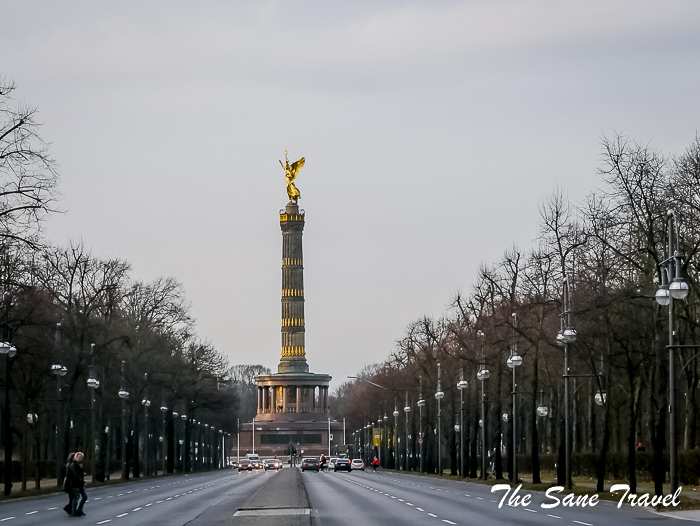 It was built in the late 19th century on the occasion of the Prussian victory over Denmark. You then continue this bus tour, taking you to Breitscheidplatz and Kurfürstendamm, where the Kaiser Wilhelm Church stands. The original church was built at the end of the 19th century but was badly damaged in bombing raids in World War II. The current ruins probably represent the most well-known monument in Germany against a war.
It was built in the late 19th century on the occasion of the Prussian victory over Denmark. You then continue this bus tour, taking you to Breitscheidplatz and Kurfürstendamm, where the Kaiser Wilhelm Church stands. The original church was built at the end of the 19th century but was badly damaged in bombing raids in World War II. The current ruins probably represent the most well-known monument in Germany against a war.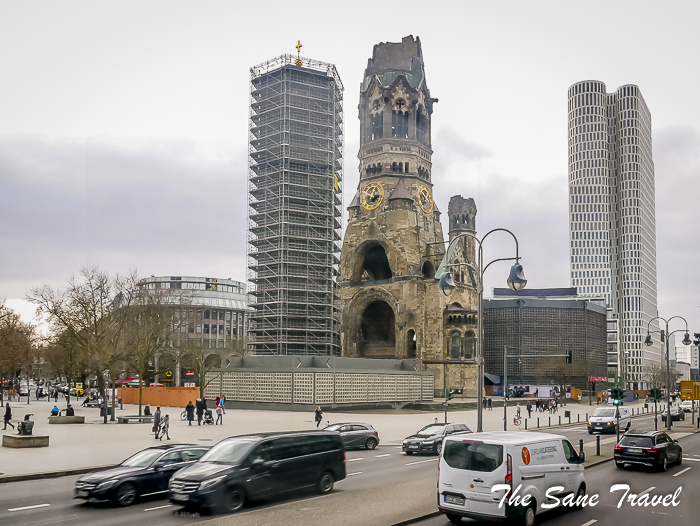 Kurfürstendamm is enticing you to go on an extensive shopping tour. KaDeWe, in particular, is well worth visiting. It originally opened in 1907 and is the biggest department store on the European mainland. The bus trip comes to an end at the Zoo Station located next to Zoologischer Garten (Zoological Garden). It is one of the most visited attractions in the city and is home to the most comprehensive collection of species in the world.
Kurfürstendamm is enticing you to go on an extensive shopping tour. KaDeWe, in particular, is well worth visiting. It originally opened in 1907 and is the biggest department store on the European mainland. The bus trip comes to an end at the Zoo Station located next to Zoologischer Garten (Zoological Garden). It is one of the most visited attractions in the city and is home to the most comprehensive collection of species in the world.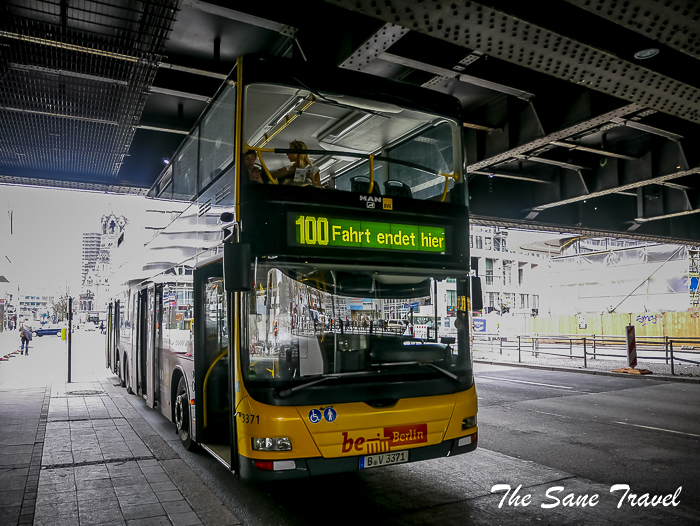 Change there to bus M45 to our next destination, Charlottenburg Palace.
Change there to bus M45 to our next destination, Charlottenburg Palace.
Charlottenburg Palace and garden
In the Western district of Charlottenburg, close to the river Spree, you find the largest royal residence in the city. The whole complex is about 500 meters (1,500 feet) long, dominated by a green copper dome with the gilded statue of Fortuna, the Roman goddess of fortune and luck. You will soon find out why Charlottenburg Palace is one of the most instagrammable places in Berlin.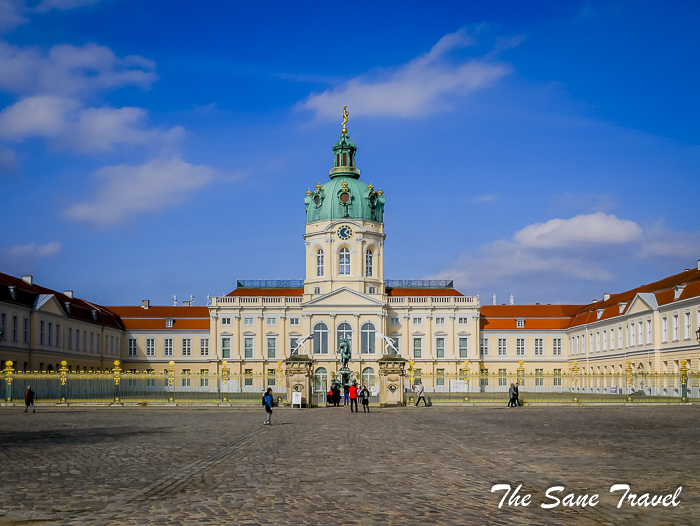 Charlottenburg Palace was built at the end of the 17th century as a gift from Elector Friedrich III to his wife, Sophie Charlotte. A variety of successors made their own additions to this former summer residence, transforming it into the finest example of baroque architecture in Berlin. In World War II, Charlottenburg Palace was heavily damaged. The first reconstruction was finished in 1957. The latest renovation of the palace that started in the early 21st century is almost done. Today you can visit the palace and different collections inside: French paintings of the early 19th century in Frederick III and Louise’s residence, china of the famous KPM factory in the Belvedere in the park, temporary exhibits in the theatre and sculptures in the New Pavilion.
Charlottenburg Palace was built at the end of the 17th century as a gift from Elector Friedrich III to his wife, Sophie Charlotte. A variety of successors made their own additions to this former summer residence, transforming it into the finest example of baroque architecture in Berlin. In World War II, Charlottenburg Palace was heavily damaged. The first reconstruction was finished in 1957. The latest renovation of the palace that started in the early 21st century is almost done. Today you can visit the palace and different collections inside: French paintings of the early 19th century in Frederick III and Louise’s residence, china of the famous KPM factory in the Belvedere in the park, temporary exhibits in the theatre and sculptures in the New Pavilion.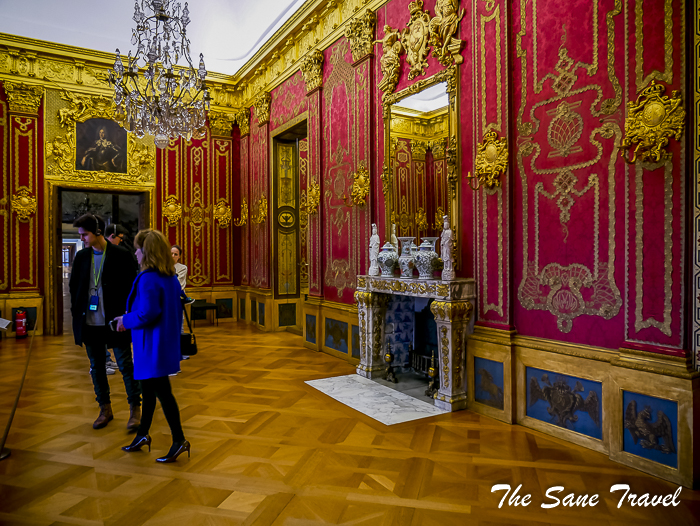
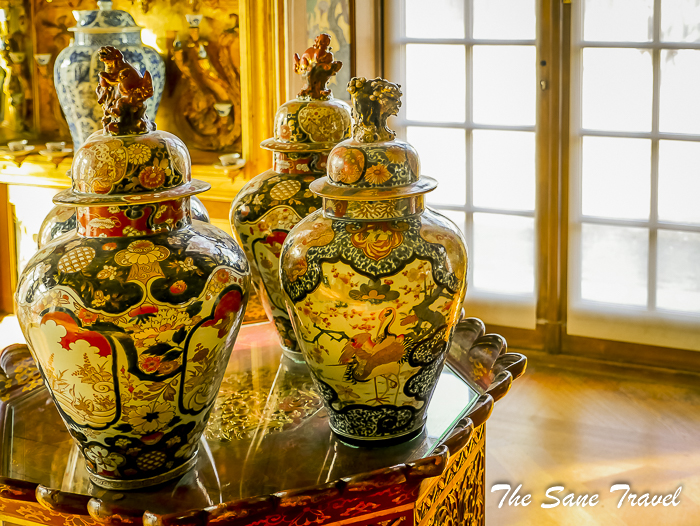
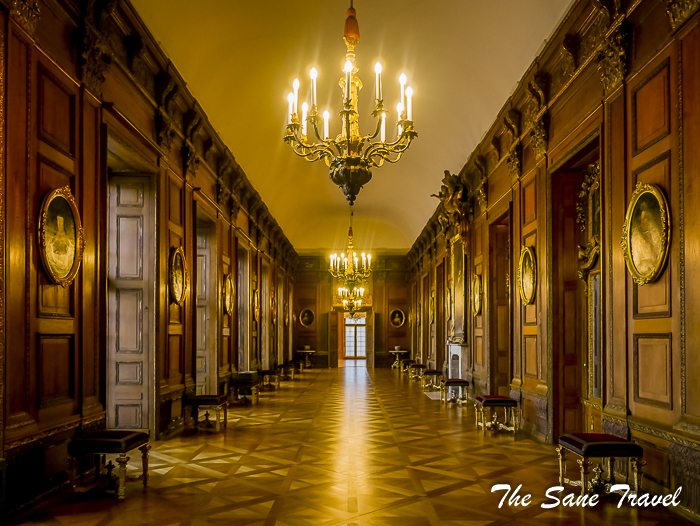
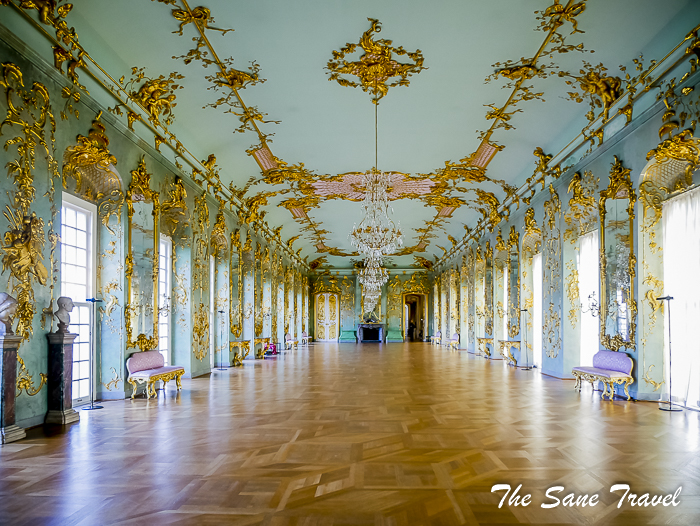
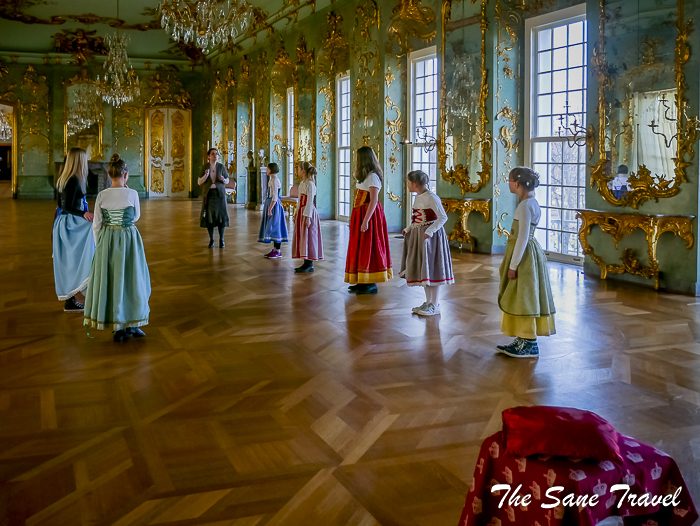
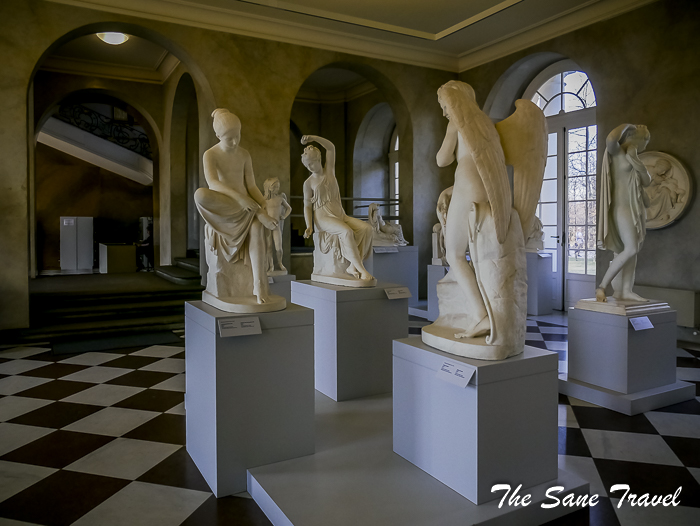 Finish your Charlottenburg palace visit with a walk in the park. The park was originally created in the late 17th century by Siméon Godeau. Godeau created a formal garden in French Baroque style with parterres and hedges trimmed in geometric patterns. In the 18th and 19th centuries, the park was converted into a less formal, English style landscaped garden. The palace park is home to the Belvedere teahouse and the Mausoleum of Queen Louise and Friedrich Wilhelm III.
Finish your Charlottenburg palace visit with a walk in the park. The park was originally created in the late 17th century by Siméon Godeau. Godeau created a formal garden in French Baroque style with parterres and hedges trimmed in geometric patterns. In the 18th and 19th centuries, the park was converted into a less formal, English style landscaped garden. The palace park is home to the Belvedere teahouse and the Mausoleum of Queen Louise and Friedrich Wilhelm III.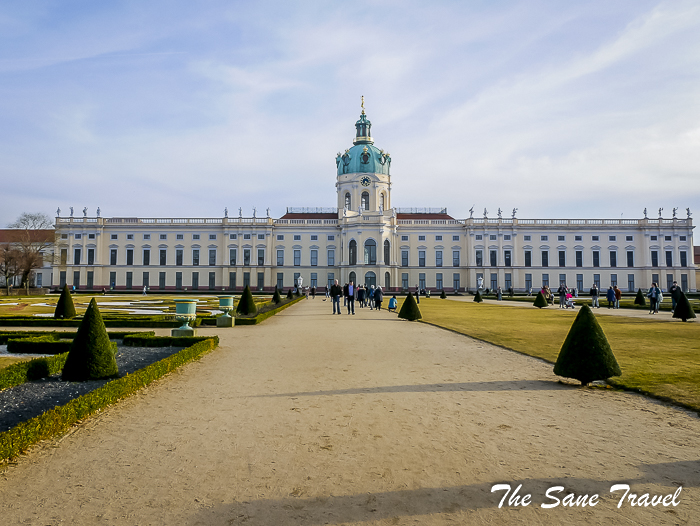 After your visit go back to the
After your visit go back to the
Berlin Dome for sunset views
As Berlin Dome has longer opening hours than most attractions of Berlin, I saved it for the end of the day. So we go back the same way we came to Charlottenburg palace to the Berlin Dome to enjoy church and sunset from the top of it. The Berlin Dome was constructed in the late 19th and early 20th century. Architect Julius Raschdorff used the style of the Italian High Renaissance with some baroque elements. The huge cupola makes you think of the Dome in Florence or even St. Peter’s Basilica in Rome.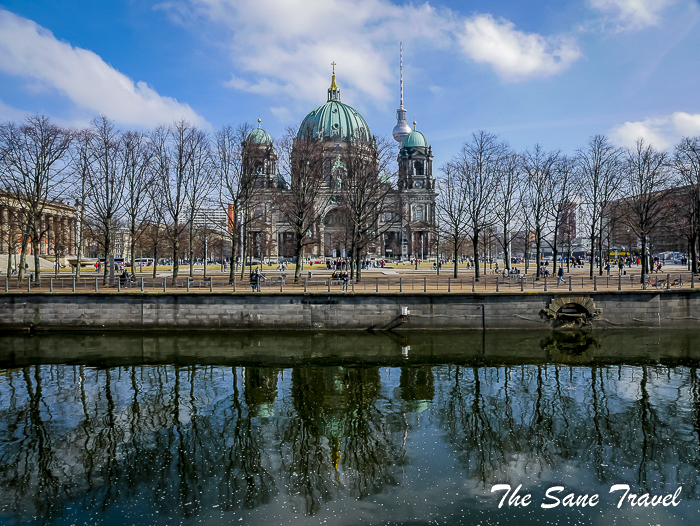
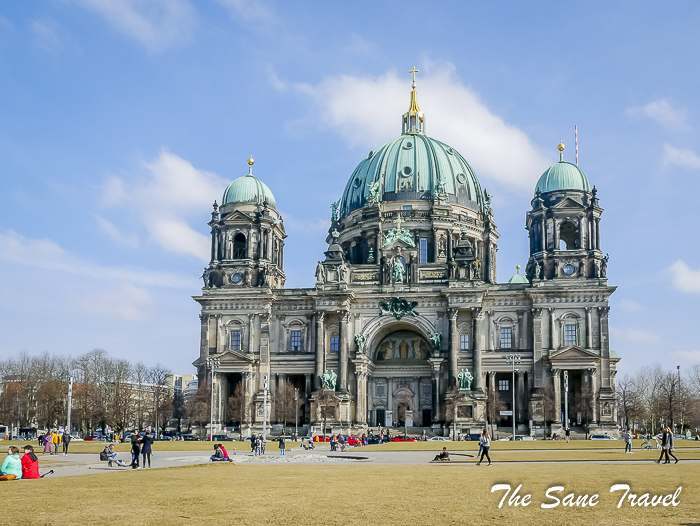 Within one night, in 1944 the Cathedral had been transformed into a ruin. Reconstruction of the church started in 1975 and took many years. Parts of the reconstructed church were opened one by one until 2002. The church has the form of an octagon and on eight columns you’ll find statues of the most important reformers of the Protestant faith. Enter the main space, the so-called “Sermon Church” (Predigtkirche) and you will be overwhelmed. Remember, it’s a Protestant church. Corinthian columns and pilasters, marble, gilded ornaments and statues await the humble visitor.
Within one night, in 1944 the Cathedral had been transformed into a ruin. Reconstruction of the church started in 1975 and took many years. Parts of the reconstructed church were opened one by one until 2002. The church has the form of an octagon and on eight columns you’ll find statues of the most important reformers of the Protestant faith. Enter the main space, the so-called “Sermon Church” (Predigtkirche) and you will be overwhelmed. Remember, it’s a Protestant church. Corinthian columns and pilasters, marble, gilded ornaments and statues await the humble visitor.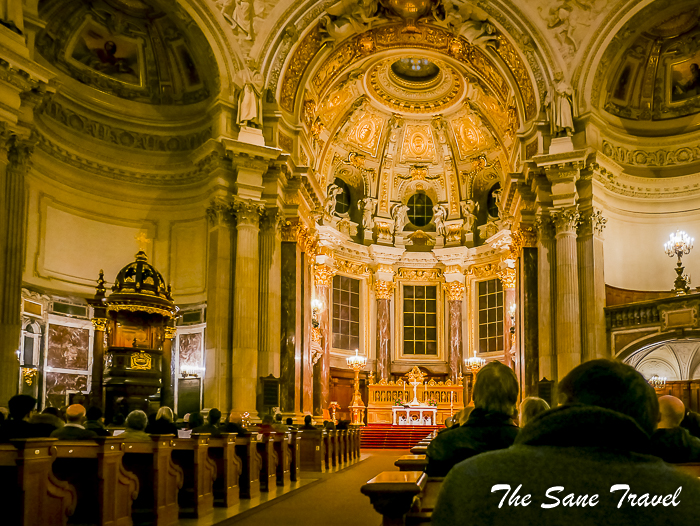
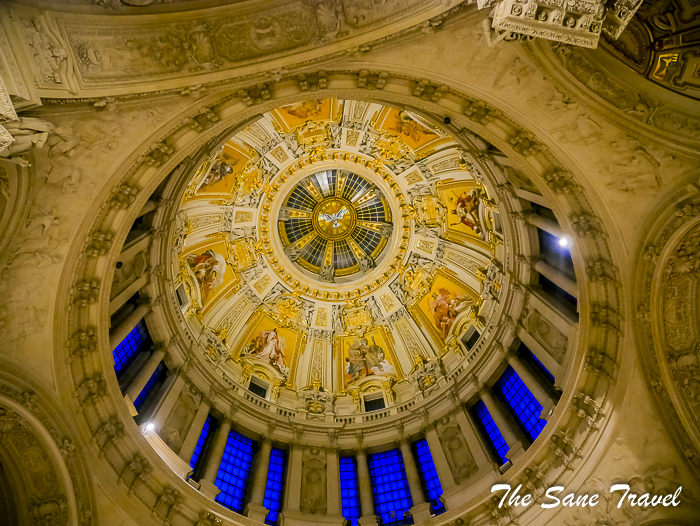 To make sure you can enter the main space, check service times in advance. During those hours the church is reserved for worship only.
To make sure you can enter the main space, check service times in advance. During those hours the church is reserved for worship only.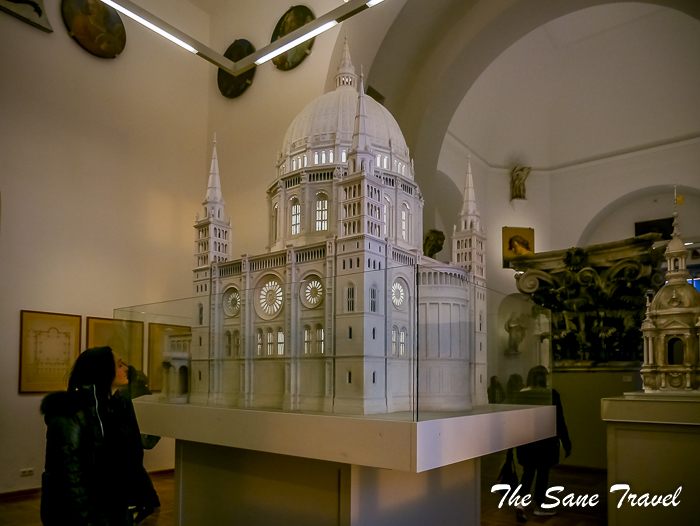
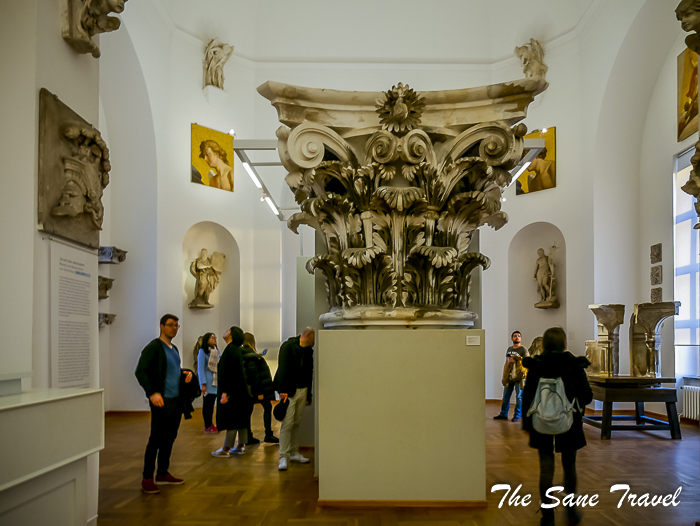 The Berlin Dome is also the burial place of the Hohenzollern dynasty. The house of the Hohenzollern ruled Prussia since the Middle Ages and the German Empire from 1871 through 1918. At the end of your church tour, take the opportunity to climb up to the dome and view the sunset above the city from there.
The Berlin Dome is also the burial place of the Hohenzollern dynasty. The house of the Hohenzollern ruled Prussia since the Middle Ages and the German Empire from 1871 through 1918. At the end of your church tour, take the opportunity to climb up to the dome and view the sunset above the city from there.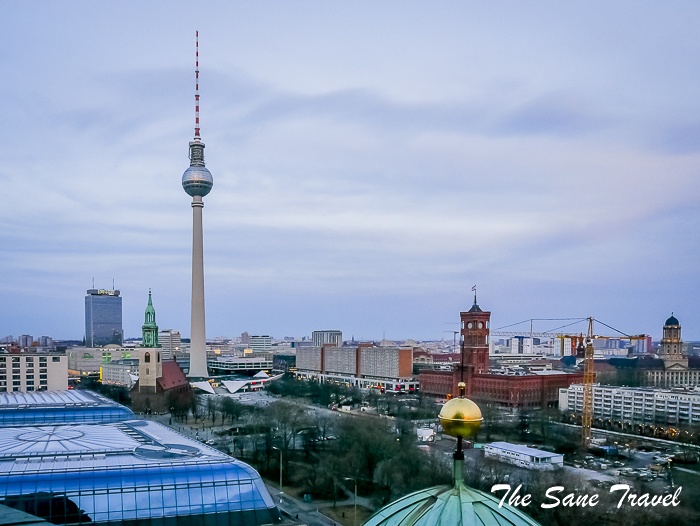
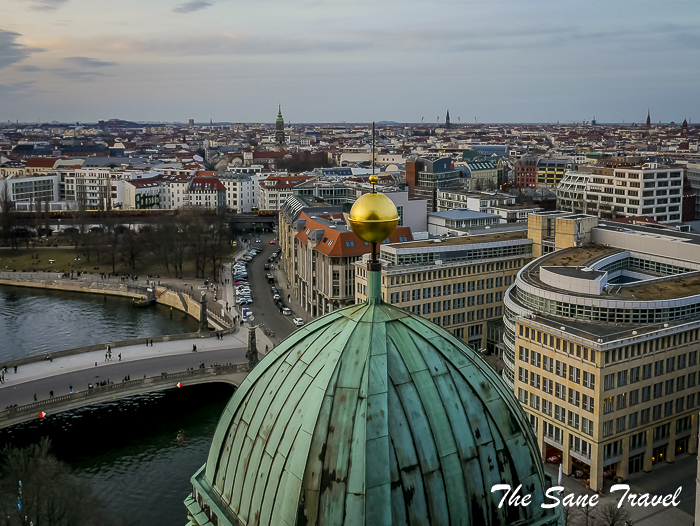
You must be tired after this packed sightseeing day, so get relaxed at the Vabali Spa! Looking for accommodation? Learn about the best areas where to stay in Berlin! Have you been to Berlin? What are your favourite sightseeing spots? Share in the comments section! If you have more time for your Germany visit consider also visiting Dresden.
Like it? Pin it!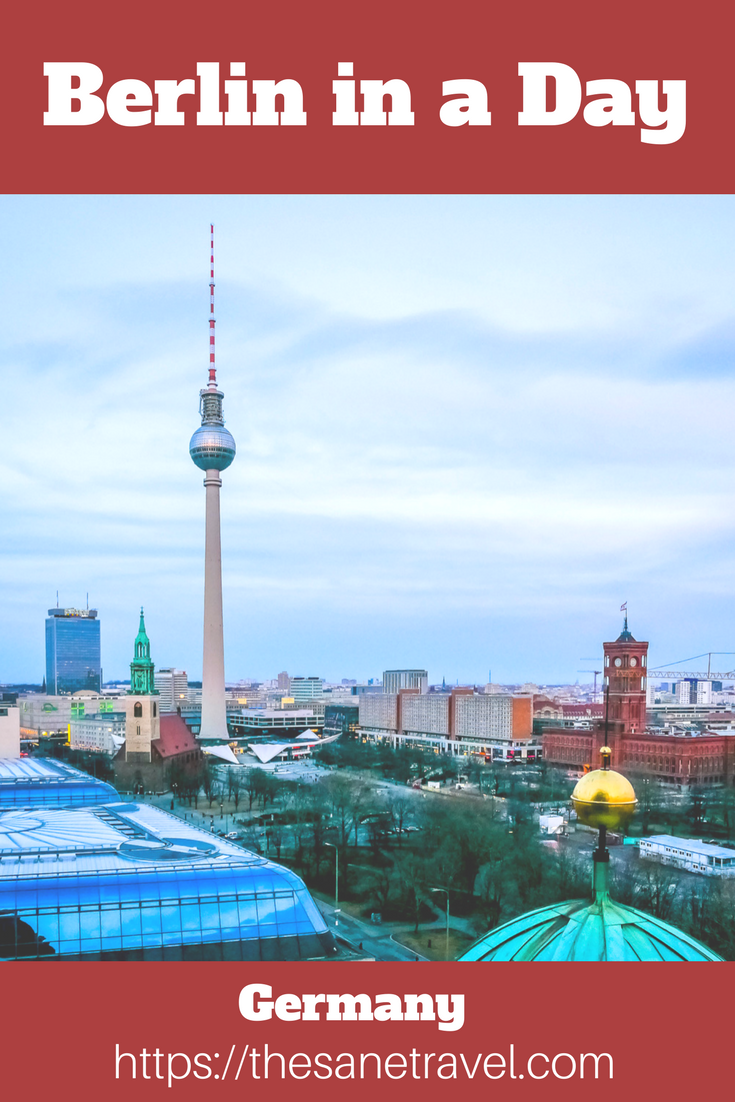
Author: Anita Sane

About the author
Anita is a part-time traveller, passionate photographer and a retired career woman from Latvia, travelling mostly solo for more than 15 years. She is a skilled travel planner who plans and executes her travels by herself. Anita wants to show you how to travel the world and open your mind to new experiences. Follow her on Facebook, Instagram, Pinterest, Twitter and Bloglovin.

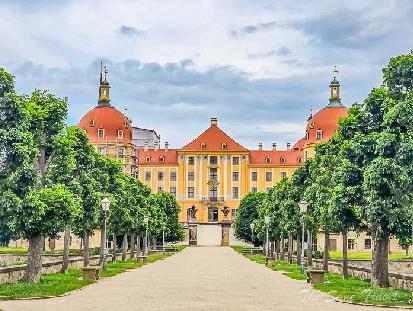
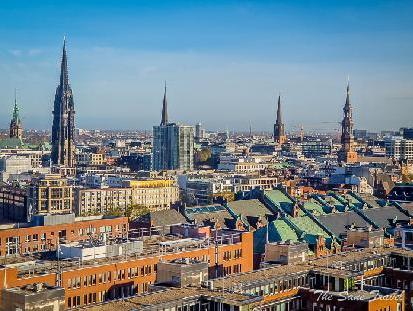
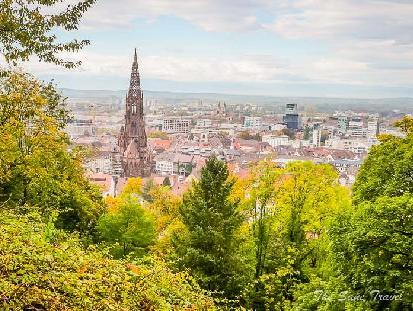
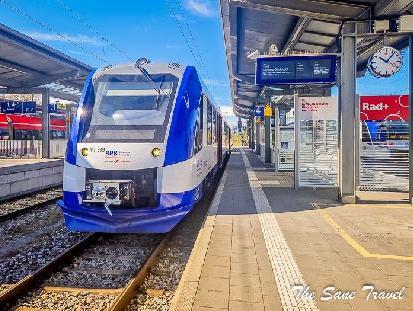
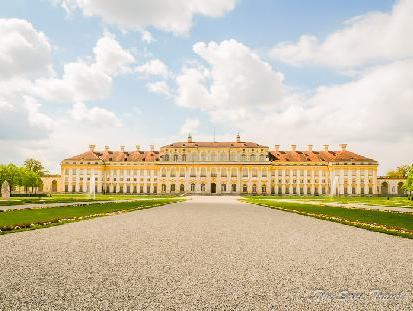
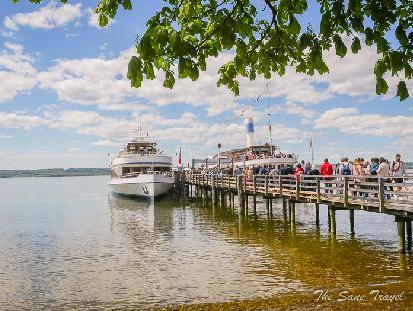
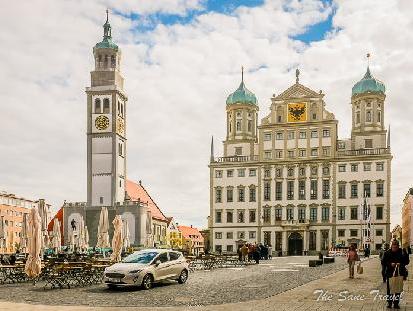
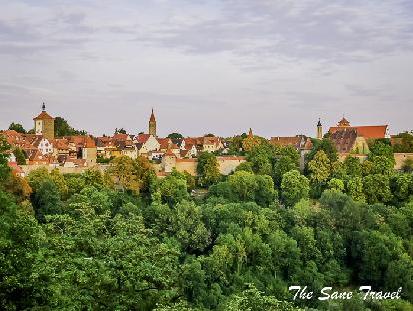
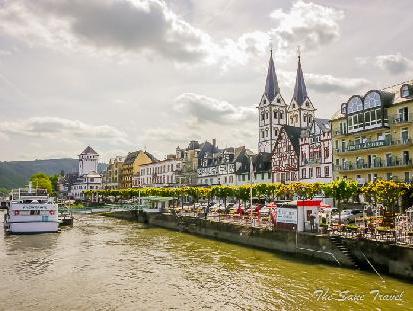
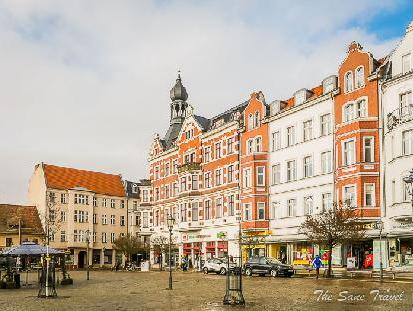
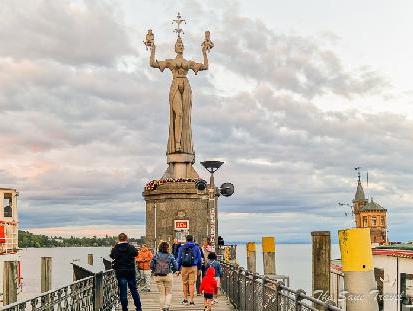
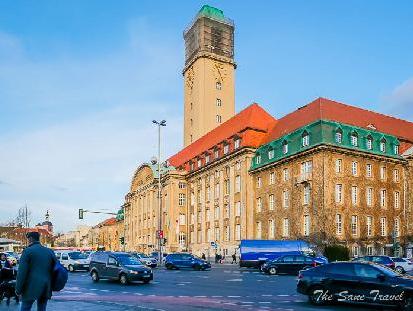

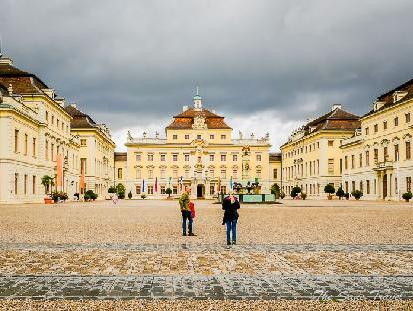
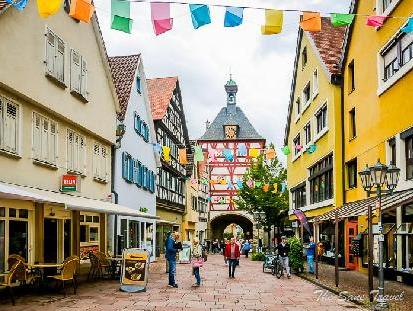
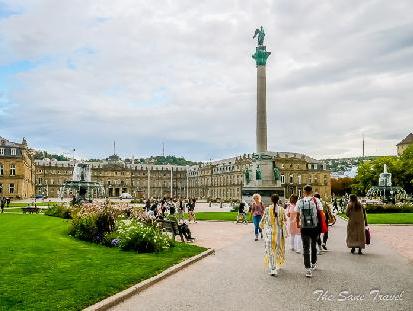

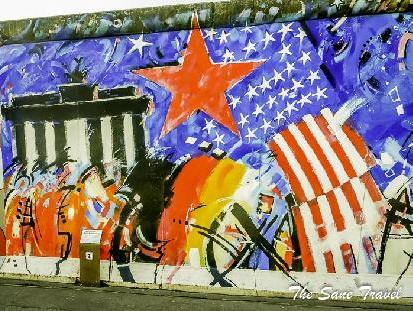
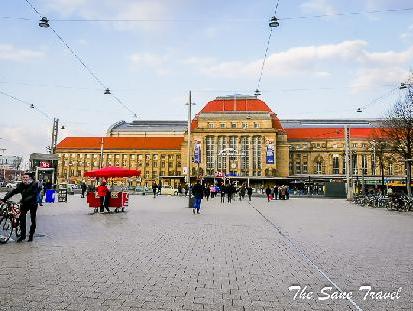
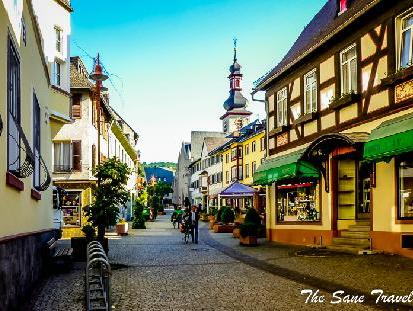
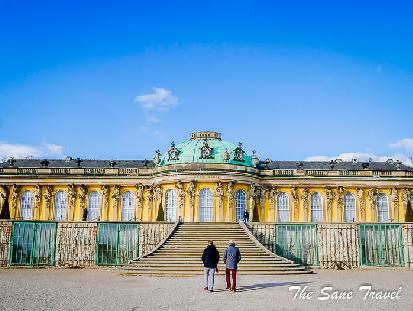
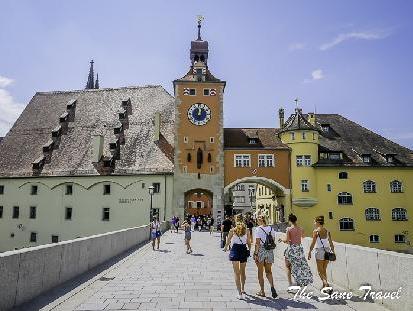
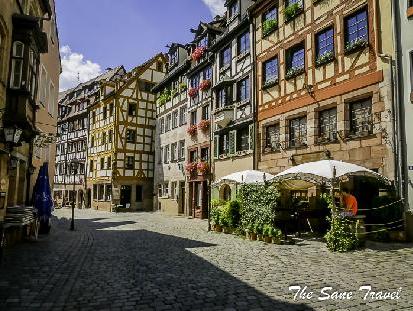
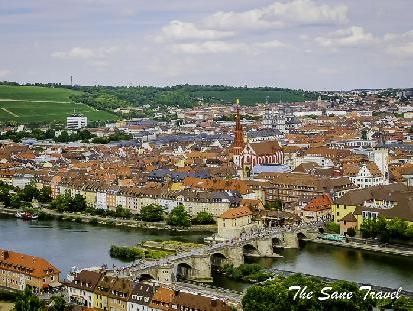
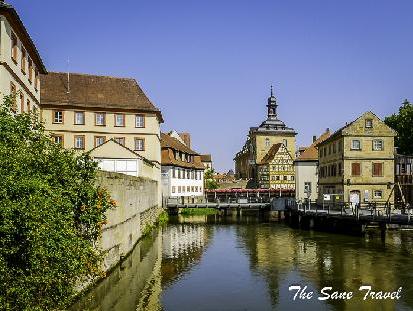
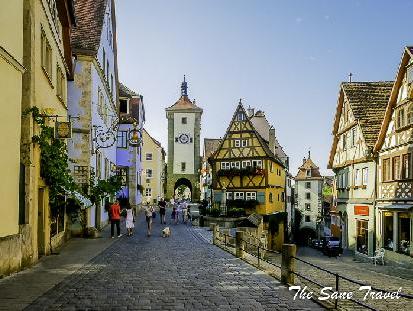
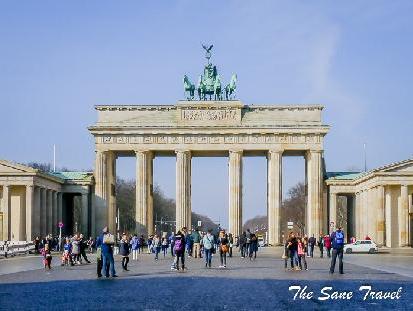
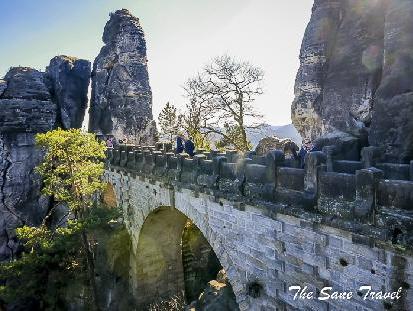
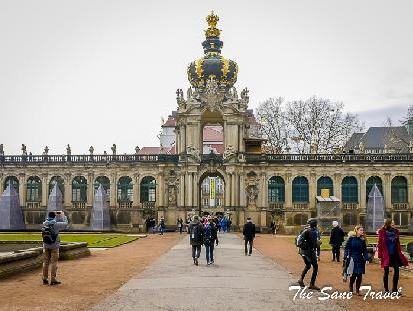
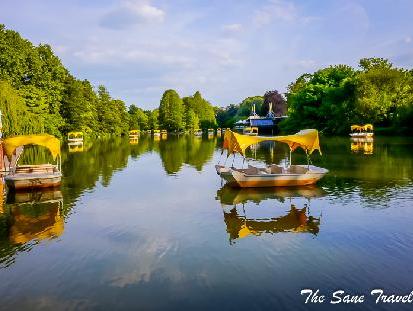
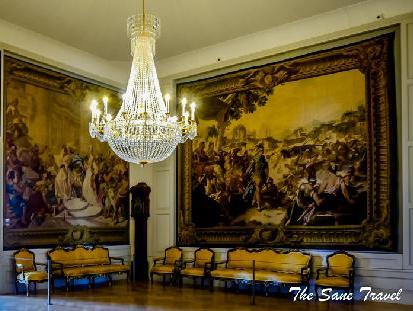
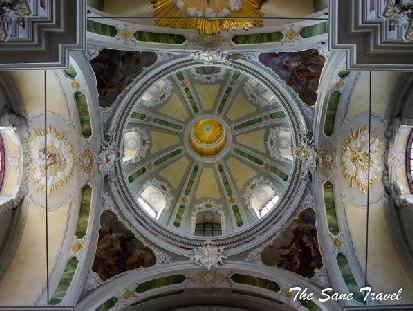
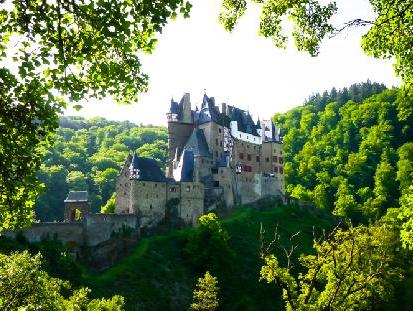
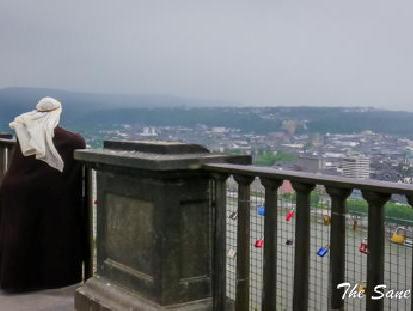
Report
My comments